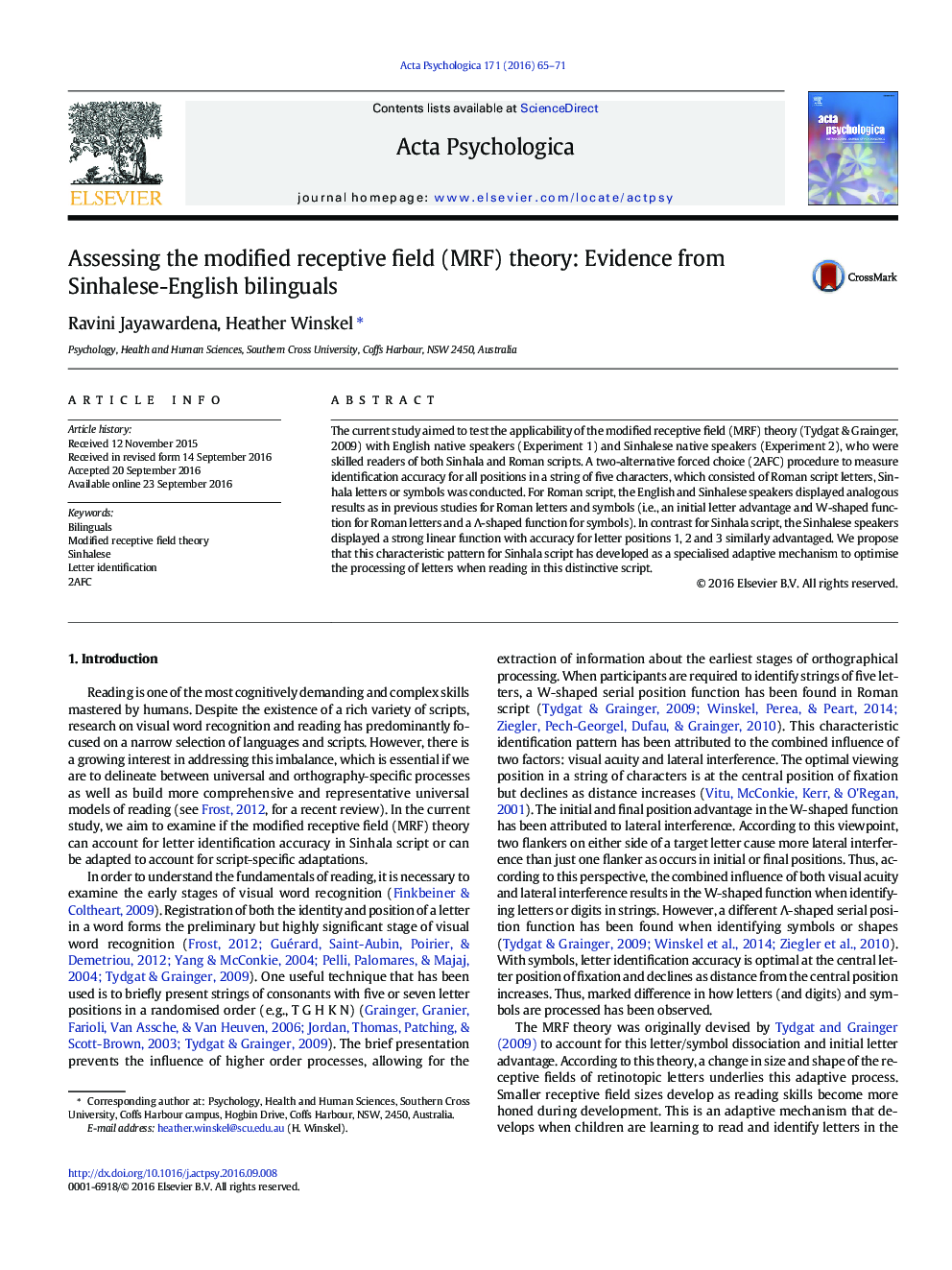| Article ID | Journal | Published Year | Pages | File Type |
|---|---|---|---|---|
| 5040281 | Acta Psychologica | 2016 | 7 Pages |
â¢Aim was to examine if the MRF theory can account for letter identification accuracy in Sinhala scriptâ¢A 2AFC procedure was used to measure identification accuracy in five character strings; Roman l, Sinhala letters or symbols.â¢For Roman script, the English and Sinhalese speakers displayed an initial letter advantage and W-shaped function.â¢In contrast, for Sinhala script, the Sinhalese speakers displayed a strong linear function.â¢Specialised script-specific adaptations develop to optimise letter processing when learning to read different scripts.
The current study aimed to test the applicability of the modified receptive field (MRF) theory (Tydgat & Grainger, 2009) with English native speakers (Experiment 1) and Sinhalese native speakers (Experiment 2), who were skilled readers of both Sinhala and Roman scripts. A two-alternative forced choice (2AFC) procedure to measure identification accuracy for all positions in a string of five characters, which consisted of Roman script letters, Sinhala letters or symbols was conducted. For Roman script, the English and Sinhalese speakers displayed analogous results as in previous studies for Roman letters and symbols (i.e., an initial letter advantage and W-shaped function for Roman letters and a Î-shaped function for symbols). In contrast for Sinhala script, the Sinhalese speakers displayed a strong linear function with accuracy for letter positions 1, 2 and 3 similarly advantaged. We propose that this characteristic pattern for Sinhala script has developed as a specialised adaptive mechanism to optimise the processing of letters when reading in this distinctive script.
